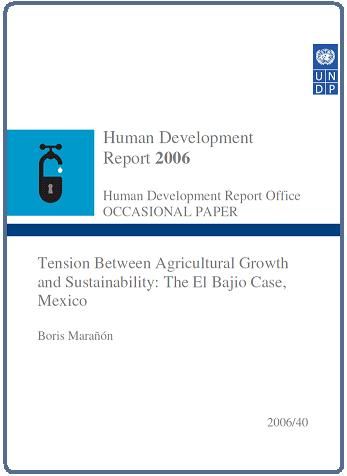Tension Between Agricultural Growth and Sustainability: The El Bajio Case, Mexico
05 enero 2012
Boris Marañón
Human Development
Report 2006
Human Development Report Office
OCCASIONAL PAPER
The production model that was promoted internationally in the wake of the Second World War led to some notable gains in terms of economic growth and sharp rises in productivity in a wide range of economic sectors. At the same time, however, it brought consequences to the detriment of natural resources that were intensively exploited, especially underground water.
El Bajío is an extensive valley about three hours’ drive from Mexico City. It includes a large slice of the state of Guanajuato and neighbouring areas of the states of Michoacán and Querétaro, with altitudes that range from 1,600 to 2,000 metres above sea level. The region has more than 400,000 hectares of high-quality irrigated land that produces grains for human and animal consumption, vegetables and fruit. Agro- industry is diversified, ranging from the roduction of wheat and maize flour, processed animal feed and dairy products to poultry and pork. El Bajío is also the nation’s leading producer of canned and frozen fruit and vegetables, including asparagus, broccoli, cauliflower, baby corn, carrots, Brussels sprouts, yellow squash, mangetout peas and strawberries, among others. The region accounts for 90 percent of Mexico’s exports of frozen produce, and is also the leading exporter of garlic and fresh green asparagus in the summer.


